Our riding apparel serves two major functions: it protects us from abrasion (sliding along the ground) and impact (hitting the ground or other objects), but in order to accomplish both missions it also needs to be constructed with the right materials and it must fit properly. All of the apparel that we test here at Woman Rider is made by companies that specialize in motorcycle gear, and is made with abrasion-resistant materials like leather or Cordura (nylon), Kevlar (aramid) and other thick synthetic fibers, and it typically comes with basic armor at a minimum: shoulders and elbows for jackets, knees for pants.
Sometimes, however, we may find that the fit is just a little off – sleeves are too baggy so the elbow armor moves out of place, or knee armor sits too high or too low – or we’d like to add the extra insurance of a back protector or hip and chest armor. And sometimes we love the apparel itself, but we want to “level up” our protection and comfort by upgrading the armor, say from CE level 1 to level 2.
Hang on, what exactly does “CE level 1 or 2” mean? CE is the abbreviation for Conformité Européenne, or European Conformity, and the CE mark, which can be found on everything from electronics to toys, indicates that the product is in compliance with the relevant European Union legislation for health, safety and environmental protection standards. It’s similar to the DOT sticker on your helmet or the FCC label on your iPhone.

There are standards in place for all kinds of products, but the three relevant for motorcycle armor are EN1621-1 (which covers armor for the limbs, hips, shoulders and tail bone), EN1621-2 (back/spine) and EN1621-3 (chest). The standards are updated from time to time, and the relevant date is appended to the code, for example EN1621-1:2012 for limb armor, last updated in 2012.
To qualify for CE approval, armor must pass a test: a 5 kg weight is dropped with the force of 50 joules (approx. 37 lb-ft) onto the armor nine times, and the amount of force transmitted is measured. The less force that is transmitted, the more protective the armor, as you can see in the current standards:
EN1621-1:2012
(Limbs, Hips, Shoulders)
Level 1– Average transmitted force of <35 kN; no single impact can be >50 kN Level 2– Average transmitted force of <20 kN; no single impact can be >30 kN
EN1621-2:2014
(Back)
Level 1– Average transmitted force of <18 kN; no single impact can be >24 kN Level 2 – Average transmitted force of <9 kN; no single impact can be >12 kN
EN1621-3:2017
(Chest)
Level 1– Average transmitted force of <18 kN; no single impact can be >24 kN
Level 2– Average transmitted force of <9 kN; no single impact can be >15 kN
Some manufacturers go beyond impact protection to also certify their armor for temperature (extreme heat or cold).
Since we aren’t subject to EU regulations, some American apparel companies – but not all – use armor that’s described as “CE level 1,” but isn’t actually tested and certified. In these cases, it’s hard to know if what you’re buying has been independently tested, if it carries an outdated certification or if it’s just foam.
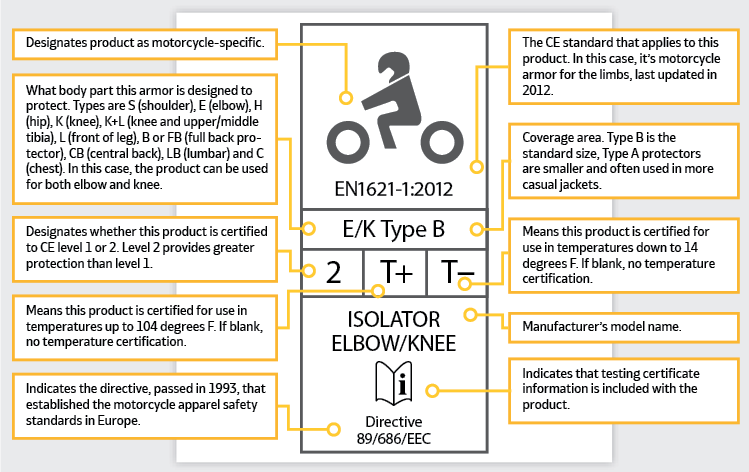
The best way to know for sure is to look for the CE label as shown in the graphic above. If your armor doesn’t have a CE label, even if it’s stamped “CE,” there’s simply no way to know if it’s been properly tested and certified.
As Matthew Dawson of Forcefield Body Armour explains, “Anything that carries the correct labeling must be tested and certified. Anything that doesn’t, cannot be classified as a CE motorcycle protective impact product. Any brand with the correct marking and labeling should be able to produce that certification on request.”
Most casual street riding and touring apparel includes shoulder, elbow and knee armor, possibly with a foam back pad and hip pads; some products step it up with a back protector and hip armor. Racing or high-end sport riding gear often includes CE level 2 armor throughout, but even then back armor is usually optional. Some jackets don’t come with any armor at all, but there are pockets for it to be added.
Lastly, it’s important to remember that, like the EPS liner in your helmet, armor breaks down and degrades over time, so a good rule of thumb is to replace it every five years or so.
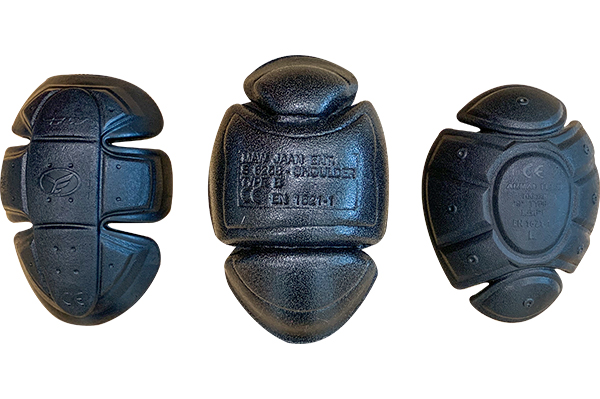
In all of these cases, you might decide to “level up” your armor with lightweight, comfortable CE-approved products from a dedicated aftermarket manufacturer like Forcefield or D3O. These companies offer shoulder, elbow, knee, hip and back armor that is CE-approved to levels 1 and 2, and certified for temperatures from -10 to +40 degrees Celsius (14 F to 104 F).
Which level you choose is entirely at your discretion, and depends not just on how robust you want your protection but also comfort and fit. For example, you might prefer thinner, less bulky level 1 armor for your casual, street-oriented leather jacket, while your heavy-duty touring suit will comfortably accept thicker level 2 pieces. But either way the replacement armor will likely be more protective and more comfortable than the stock armor.
When installing it, be sure the pockets close securely (most use hook-and-loop fasteners) and that the armor sits where it’s supposed to. The easiest way to make sure aftermarket armor will fit is to measure the stock armor’s length and width; the replacement should be that size or just a bit smaller.
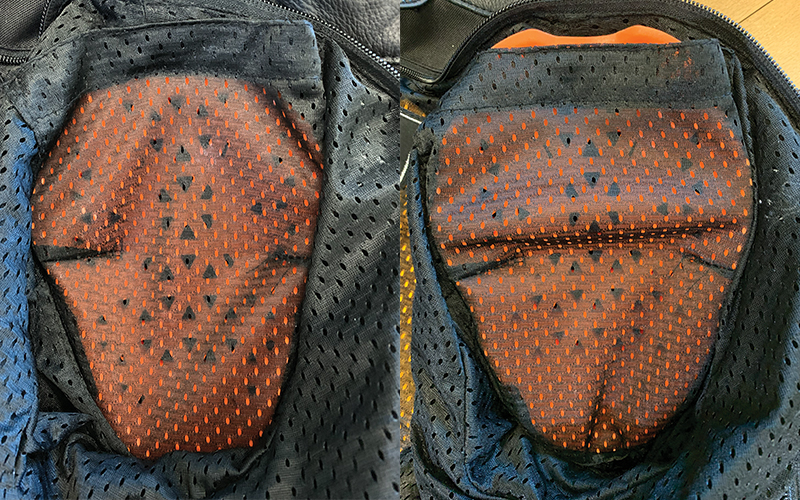
That said, sometimes replacement armor will be difficult or impossible to fit into the pockets of your apparel, and this is especially common with back protectors. It seems there are as many back protector pocket shapes as there are jacket styles, so if you’re having trouble finding one that fits your jacket – or you’re looking for even better protection – strap-on back armor might be your best option. Options range from a simple spine protector to one with an integrated kidney belt to a complete torso armor package that also protects your chest and ribs.
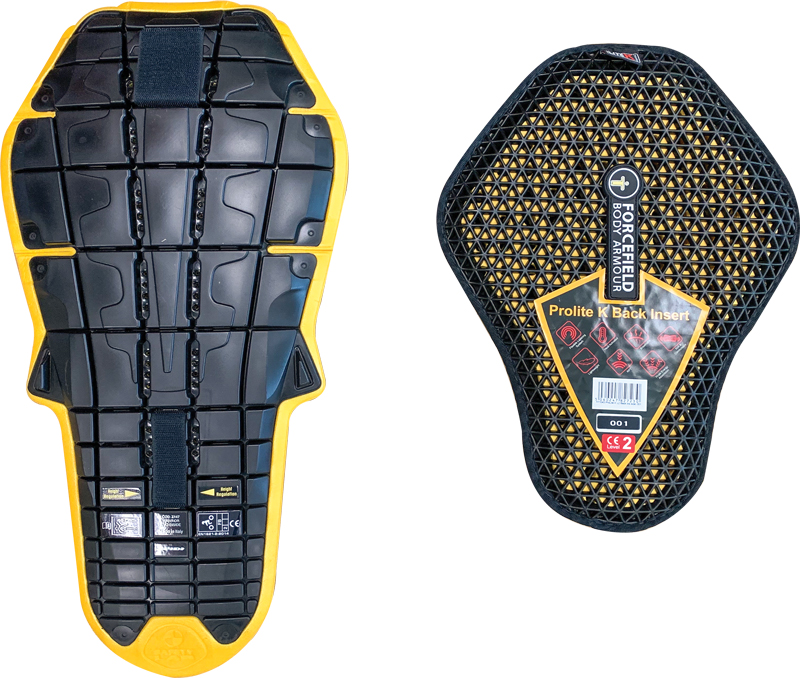
Going a step further, companies like Bohn Body Armor, Forcefield and Fly Racing (see image below) offer armored base layers that provide complete protection from shoulders to shins, and these can be worn under just about anything – including your favorite old (un-armored) leather jacket. Just remember the second function of our apparel: abrasion resistance. Your armor will protect you from the impact, but cotton jeans or a thin jacket will shred uselessly; layer up appropriately.
In today’s world of distracted drivers and ever more crowded roads, protecting yourself is more important than ever. Leveling up your apparel’s armor is an easy and inexpensive way to ensure you’re safe and comfortable every time you swing a leg over the saddle.
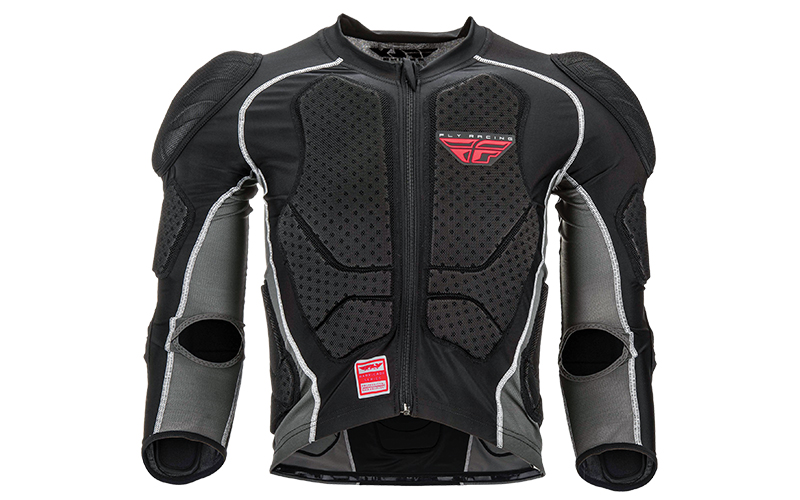


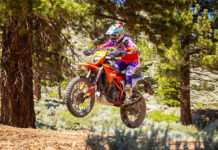
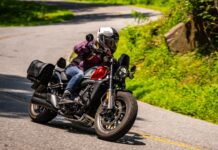










I am glad to see there is now a concerted effort to deal with woman motorcyclists! Women make up a large portion of the motorcycle market these days and company’s are very slow to respond to the fact that the “average” male model component does not fit for women! Great job, keep up the good journaling!